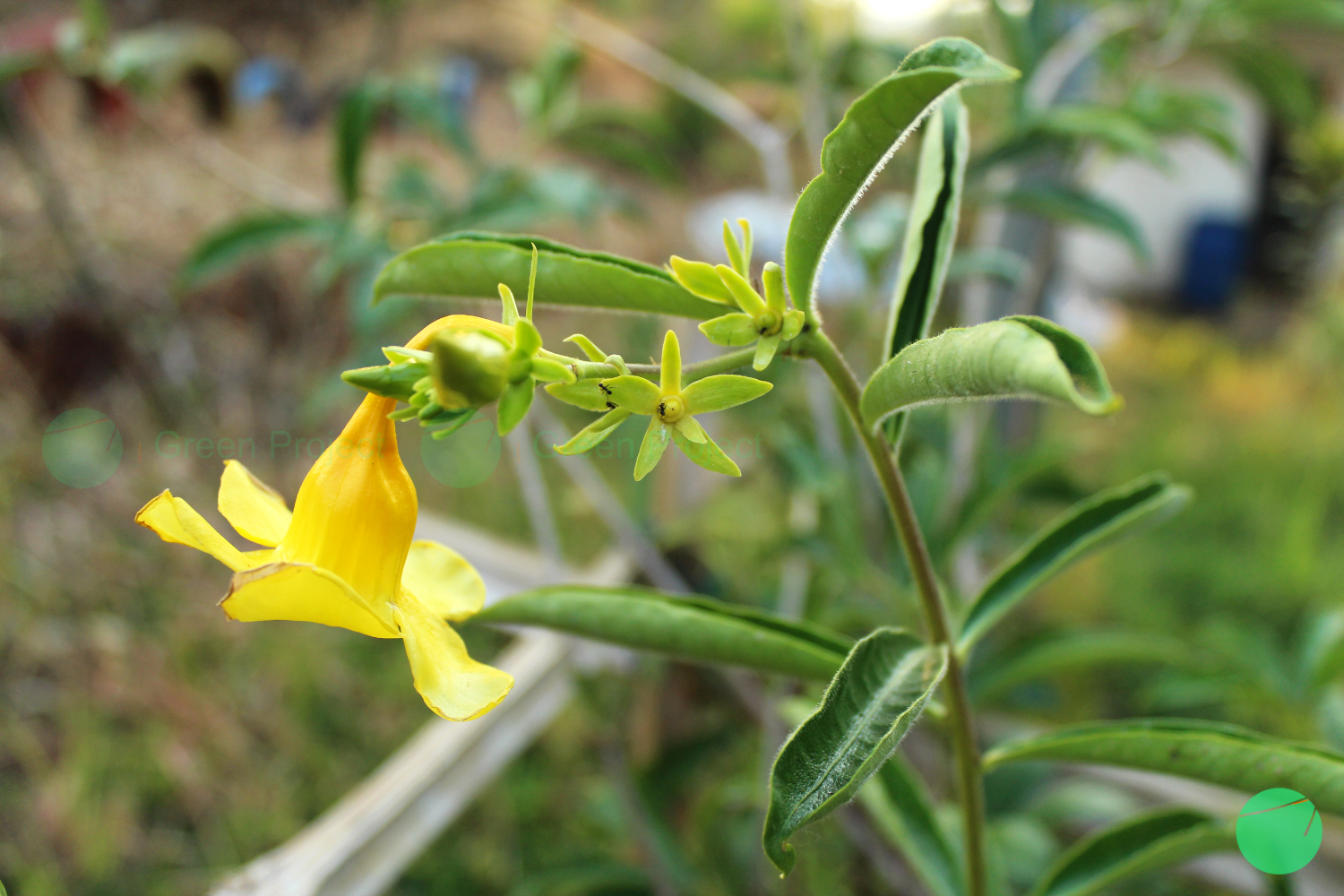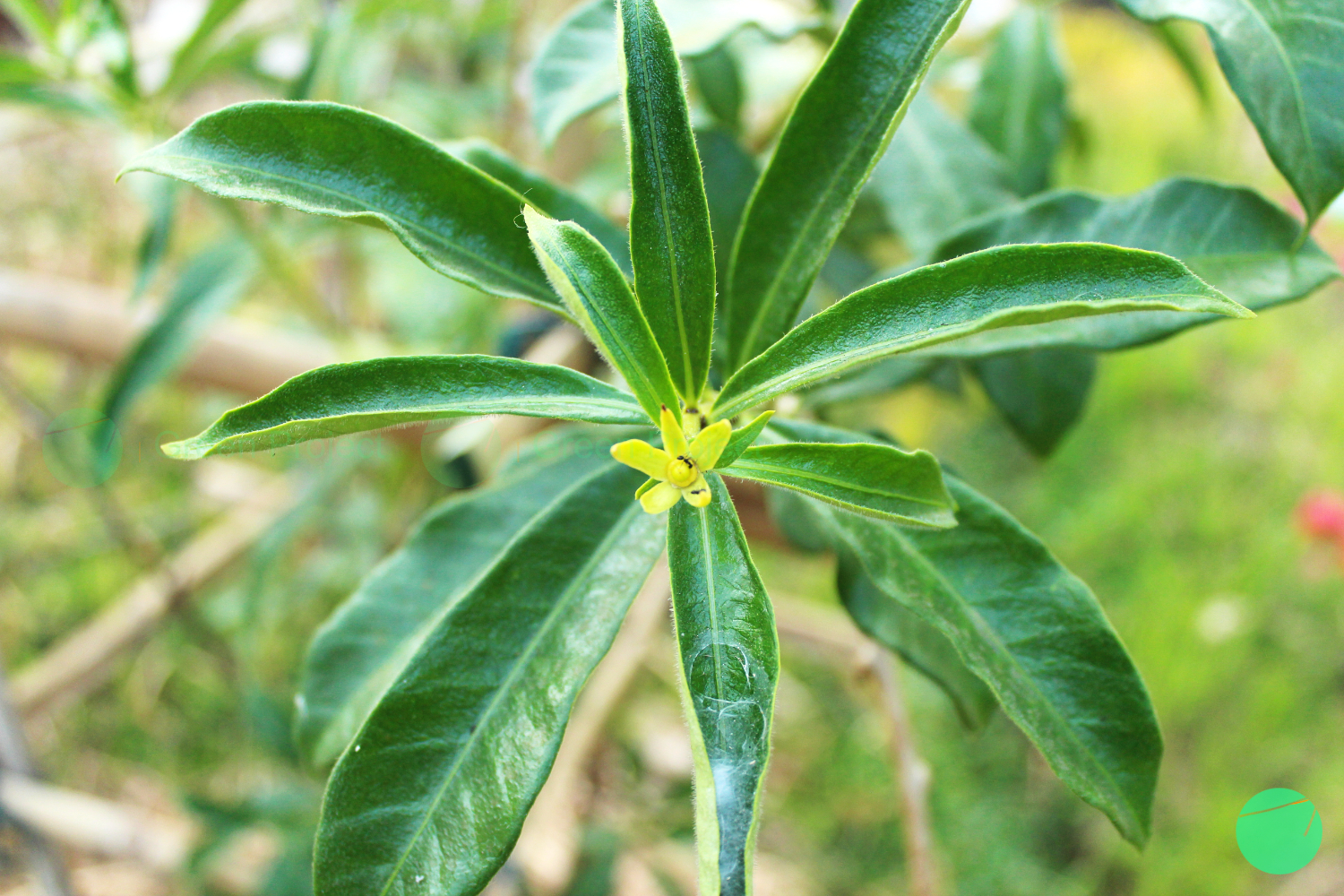Naming Identity
Bunga trompet is scientifically named in Latin as Allamanda cathartica. Popularly in English this plant is known as golden trumpet, common trumpetvine or yellow allamanda.
In China, this plant is known as ruan huang chan, while in Spain the trumpet flower plant is more commonly known as campana de oro or canario. The naming of the genus Allamanda is in honor of the Swiss botanist named Jean Frédéric-François Louis Allamand, who collected seeds in Suriname and sent them to Carlos Linnaeus for naming in 1771 (Petricevich & Abarca-Vargas, 2019). Meanwhile, the species name cathartica means catharsis or cleansing which refers to its medicinal purpose in inducing vomiting (NParks | Allamanda Cathartica, 2023).
Taxonomy
Kingdom | Plantae |
Phylum | Spermatophyta |
Class | Magnoliopsida |
Order | Gentianales |
Family | Apocynaceae |
Genus | Allamanda |
Species | Allamanda cathartica |

Origin
Yellow allamanda are believed to originate from the South American region which includes Brazil, French Guiana, Guyana, Suriname and Venezuela (Rojas‐Sandoval & Acevedo‐Rodríguez, 2022).
In present days, this flowering plant has been widely distributed and cultivated in many countries with warm, tropical, and sub-tropical climates. Such as Australia, Africa, China, Central America, several islands in the Pacific Sea, and Southeast Asian countries such as Indonesia, Malaysia and Singapore.
The species A. cathartica (yellow trumpet flower) and A. blanchetii (pink trumpet flower) are generally cultivated as ornamental plants and widely commercialized.
Description of Form and Growth and Invasive Properties
Yellow allamandas are evergreen plants that can grow to a height of 6 meters. The stems are woody and contain milky sap. The leaves that grow along the stem have a rough surface with an oval-lanceolate shape and can grow up to 16 cm long and 6 cm wide.
The attractive flowers are yellow with a funnel or trumpet shape that grows from the leaf axils. The flower sepals are oval-shaped with 5 lobes in a spread position with a yellow flower corolla. Meanwhile, the fruit is in the form of a rotating capsule with solid and winged seeds.
This plant will flower best in full sun. Yellow allamanda plants can be trained to climb on supports such as trellises or bamboo fences. Occasional pruning is needed to increase air circulation to reduce fungal attacks on the leaves (NParks | Allamanda Cathartica, 2023).
This species reproduces sexually through seeds and vegetatively through cuttings.
Currently, this species is listed as an invasive species in China, Guatemala, El Salvador, Honduras, Costa Rica, Nicaragua, Puerto Rico, the Virgin Islands, Samoa, Fiji, and French Polynesia, as well as an environmental weed in Australia. Yellow allamanda also said to has the potential to modify native plant communities by outcompeting native understory plants (Rojas‐Sandoval & Acevedo‐Rodríguez, 2022).

Benefits and Side Effects of Yellow Allamanda Plants for Health
Its flowers attract attention, making it one of the flower plants that is widely cultivated as an ornamental plant. However, studies and observations of the compounds contained in trumpet flowers have been carried out since 1954. A report written by Petricevich and Abarca-Vargas (2019) describes that initial chemical studies showed the presence of alkaloid compounds, anthraquinones, anthocyanins, carbohydrates, carotenoids, coumarins, flavonoids, glycosides, hydrocarbons, lignin, lipids, phenolic compounds, quinones, saponins, steroids, tannins and terpenes. These compounds are obtained from various extracts from several parts of the plant, especially leaves, flowers, stems, bark, roots, and shoots.
Furthermore, through various studies conducted, it was found that trumpet flowers have a lot of potential as an analgesic, anti-inflammatory, antidepressant, antidiabetic, antihyperlipedaemic, antifertility, wound healing, thrombolytic, laxative, tyrosine, amylase, antimicrobial as well as an antimalarial agent, nematicide and antioxidant.
However, there are several side effects that can arise from consuming trumpet flower plants. The trumpet flower plant is reported as a poisonous plant because of the presence of the cardiotoxic kanduinga glycoside compound. All parts of the plant can cause dermatitis and the leaves and sap have been reported to cause persistent diarrhea at high levels of consumption. Additionally, skin irritation has also been reported, but the compound responsible has not been identified.